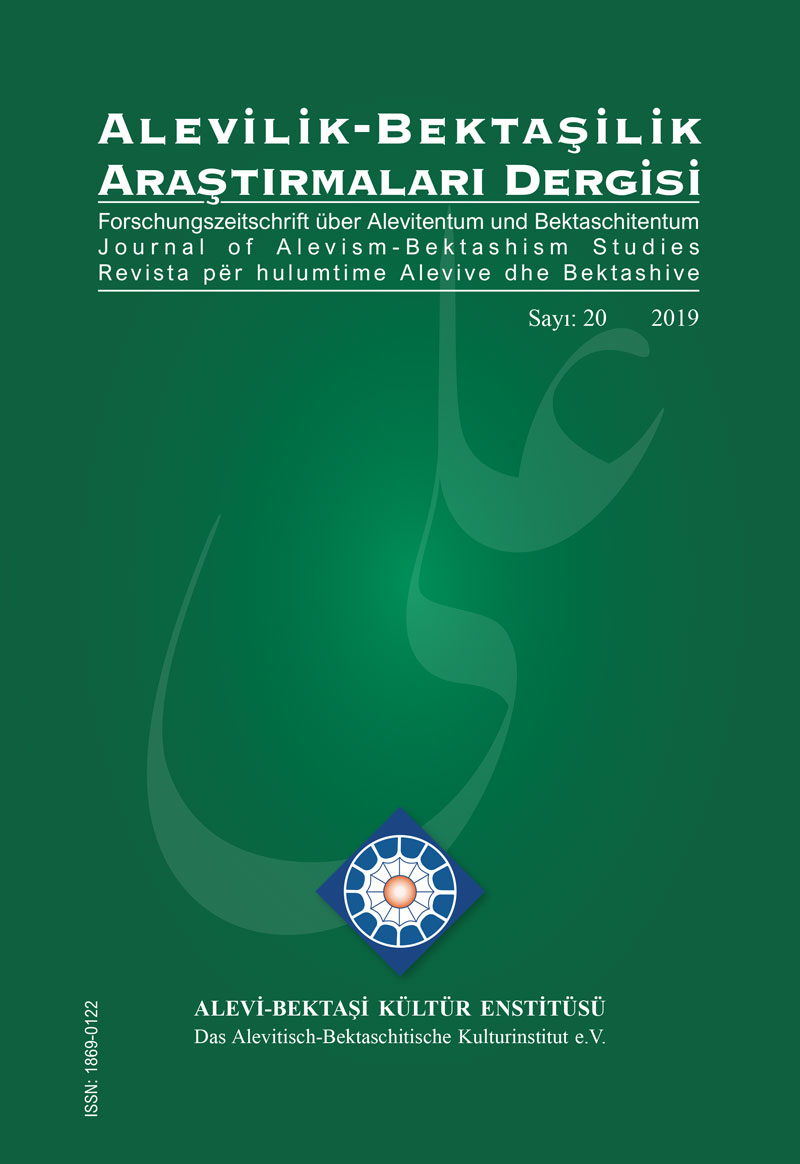Social Positioning in Hz. Ali’s Cenknames:‘The Example of Blood Castle Cenk’
DOI:
https://doi.org/10.24082/2019.abked.255Keywords:
Cenknames, Hz. Ali, text analysis, social positions, collective subconsciousAbstract
Literary texts, belonging either to oral or written tradition, bear the traces of a period in which they have emerged. These traces sometimes manifest themselves directly, and sometimes trough allegory and symbols. Especially oral tradition is not far from social context in question, in order to pass social codes down to the next generations. However, formation process, which has usually continued for centuries, embeds these traces into the depths of narrative material. In such cases, although narrative continues to fulfil the mentioned function by stimulating collective subconscious, it is not easily understandable how such function occurs. Modern science tries to illuminate this part of the functioning of literary text, which affects simultaneously individual and society, through concepts such as psychoanalysis, myth, archetype, collective subconscious etc. Both structuralism and psychoanalytic literary theory try to comprehend the above-mentioned mechanism of literature. In this context, Hz. Ali’s Cenknames are unique source for comprehending the period in which they were emerged. In our paper, we tried to analyse the text titled Blood Castle Cenk (Kan Kalesi Cengi) over its structural properties. We analysed how Islam, Prophet Muhammed, and Imam Ali were positioned in the text around storyline. In this context, we tried to determine what kind of social positioning narrative has pointed out. We determined Imam Ali’s influence on the construct of the text through concrete examples. Firstly, we addressed Prophet Muhammed’s position in the centre of Islamic society and his chosennness by Allah over the storyline. In a similar manner, we showed Imam Ali’s function, which had been chosen by Prophet Muhammed and Allah and which represents Islam. Superiority of Islam to Idolatry, Christianity and Judaism were showed by Imam Ali’s actions and analysis of this was made. We dwelt upon determination that Imam Ali’s representation of Islam was addressed bilaterally as jihad (holy war) and scholarship (science) in the text. We analysed the appearance of this bilateral narration in the storyline. We reached to a hierarchical order of the prophet family, named Ahl al-Bayt, from their appearances within the text. Similarly, we determined that the difference between Prophet Muhammed and other Muslims in Islamic society was fictionalized exactly the same within the text between Imam Ali and other sahabas (companions of Prophet Muhammed), and that the events in the texts go parallel with Imam Ali’s own life rather than chronology of Islam’s emergence and spread. We dwelt upon intertextuality between Imam Ali’s and Prophet Musa’s adventures. If we think of Islam as a religion in a two-piece structure as itiqad (faith) and amal (action), we see, throughout the text, that the former was symbolized by the kalima shahadah (the word/the declaration of testimony of faith), and the latter by the concept ‘jihad’. We have shown that literary narratives, such as cenknames that are one of historical sources treating the Islam-jihad relationship, which is even today a serious issue, determined social codes in this context and passed them down to the next generations. We prepared ground for the future readings on nomadic society, warrior leader and war economy, in particular. As a result of all of these, it was seen that Imam Ali’s Cenknames had an important function in determining and analysing collective consciousness of Islamic society.








